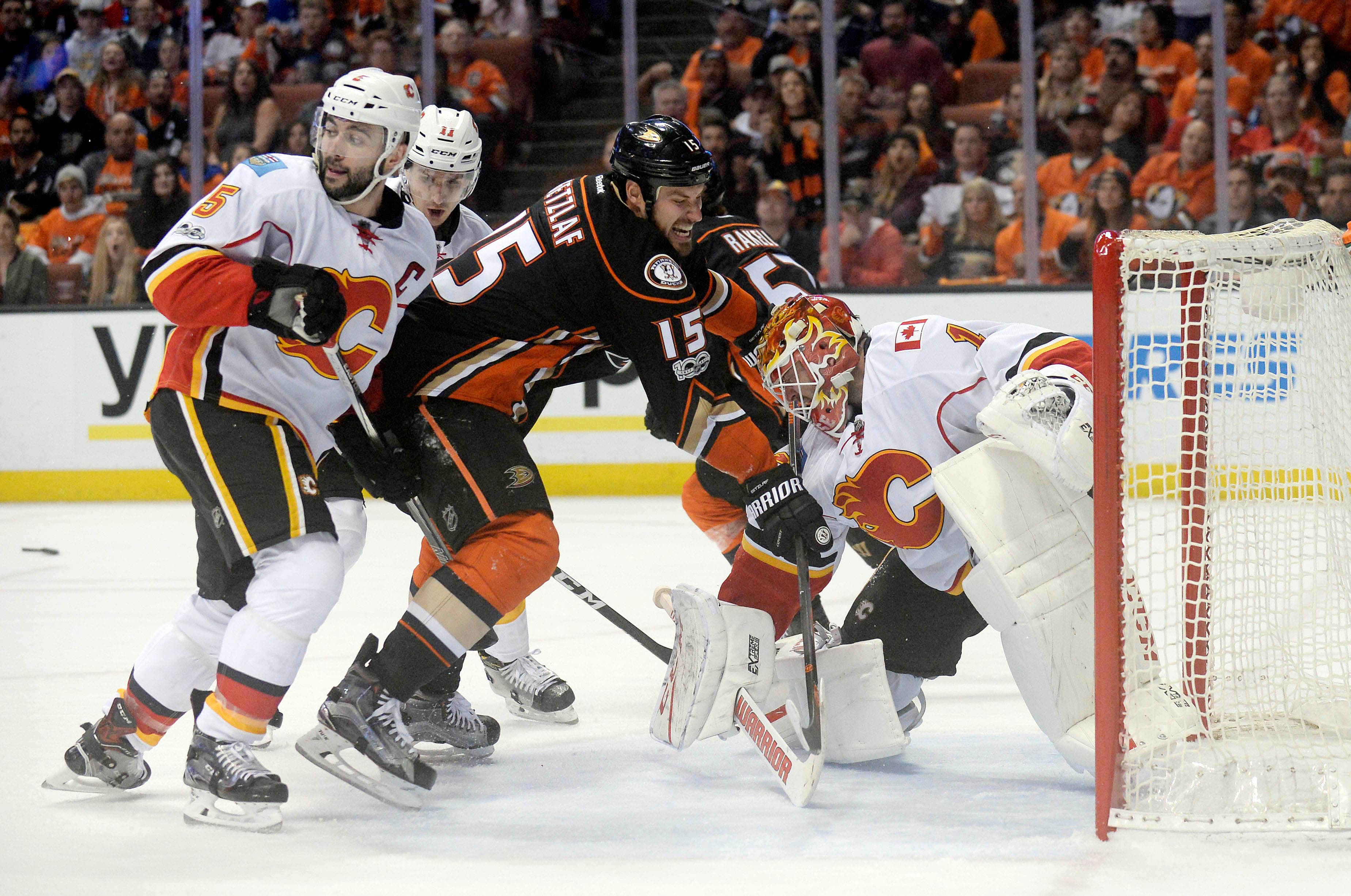How did line matching look in Game 2?

By Ryan Pike
7 years agoIn the second game of their series, the Anaheim Ducks continued to hold last change as the home team against the Calgary Flames. As a result, they were able to get the matchups that they wanted. Oddly, the matchups they wanted were virtually identical to the matchups they had in Game 1.
Here’s a quick glance at what the matchups were in Game 2 (and the series so far), and some potential moves the Flames might want to look at for Games 3 and 4 in Calgary.
Most common matchups
In terms of even strength time on ice, here’s a descending glance at the general matchups in Game 2:
- Getzlaf-Eaves-Rakell against Backlund-Frolik-Tkachuk (10:25)
- Kesler-Cogliano-Silfverberg against Monahan-Gaudreau-Ferland (10:13)
- Vermette-Perry-Ritchie against Bennett-Chiasson-Versteeg (6:01)
- Thompson-Shaw-Wagner against Stajan-Bouma-Brouwer (4:33)
Game 1 was much more of a three line game, probably because the power plays mucked up a lot of the matching, but Game 2 was much more of a top six/bottom six type of contest in the sense that the two top six units played each other a ton and the bottom six units played each other with the little remaining time.
Goals and penalties
The even strength goals in this game were scored by Kesler’s line on Monahan’s line and Getzlaf’s line against the Backlund line.
In terms of penalties, here’s the breakdown:
- The Backlund line took two penalties against the Getzlaf line.
- The Stajan line took one penalty against the Vermette line.
- The Monahan line took one penalty against the Kesler line.
- The Getzlaf line took one penalty against the Monahan line.
- The Getzlaf line took one penalty against the Backlund line.
- The Vermette line took one penalty against the Stajan line.
Once again, the Ducks seemed to come away with the better of the even strength matches in terms of generating goals and penalties from their favoured matchings with Flames lines. Heck, even when they strayed from their preferred matchings they tended to get good results (or at least break even).
At a glance
Here’s a quick comparison of Flames performance versus different Ducks line at even strength. Included are head-to-head time on ice, Corsi For percentage and offensive zone start percentage.
| Ryan Getzlaf | Ryan Kesler | Antoine Vermette | Nate Thompson | |
| Sean Monahan | 1:34 75% CF 100% OZS | 10:13 56% CF 100% OZS | 0:45 0% CF n/a OZS | 2:22 0% CF 33% OZS |
| Mikael Backlund | 10:25 45% CF 63% OZS | 3:15 86% CF 75% OZS | 0:31 n/a CF n/a OZS | 0:49 n/a CF n/a OZS |
| Sam Bennett | 0:57 0% CF 0% OZS | 0:25 n/a CF 100% OZS | 6:01 40% CF 50% OZS | 2:10 50% CF 100% OZS |
| Matt Stajan | 2:09 80% CF 0% OZS | 0:19 100% CF n/a OZS | 2:52 45% CF 33% OZS | 4:33 29% CF 0% OZS |
Aside from Monahan’s trio against Kesler’s, every Flames unit struggled against the unit they were most frequently out there against in Game 2. Heck, Stajan’s line got their heads kicked in against Anaheim’s bottom six. They won’t see a ton of ice time in the two games in Calgary, but Glen Gulutzan will need to be strategic in how he deploys his fourth line.
The good news is that the Monahan line has, for the series, been Calgary’s best possession line despite facing the Kesler matchup for the first two games. If they can keep that up, that could allow Gulutzan to give his remaining three lines some favourable matchups and allow them the opportunity to generate some offense when they’re on the ice. It’ll be interesting to see if Gulutzan does a wholesale shift of matchings to give all four lines a different (and potentially easier) look at home, or if he tries to give one particular line an easier go of it in an attempt to do some damage against a particular Ducks line. If the Monahan line has done well against Kesler, potentially the 3M line could get some relief by playing against the next-worst Ducks line (in terms of puck possession) in Vermette’s grouping. (That would leave Bennett against Getzlaf and the fourth lines possibly against each other.)
Recent articles from Ryan Pike





